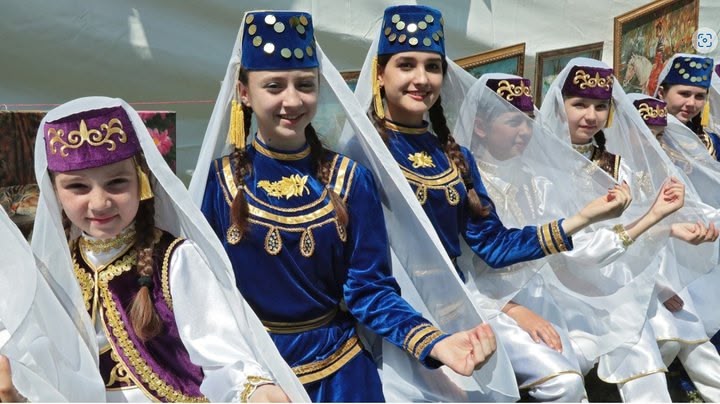My father met my mother when he was visiting Ukraine before the beginning of this century and millennium!
My father was in eastern Ukraine with a trade delegation from Norway in the late Nineties. My mother was among the trade delegation from Crimea. She is Tatar, and Ukrainian.
Initially, the ethnonym Tatar possibly referred to the Tatar confederation. That confederation was eventually incorporated into the Mongol Empire when Genghis Khan unified the various steppe tribes. Historically, the term Tatars (or Tartars) was applied to anyone originating from the vast Northern and Central Asian landmass then known as Tartary, a term which was also conflated with the Mongol Empire itself. More recently, however, the term has come to refer more narrowly to related ethnic groups who refer to themselves as Tatars or who speak languages that are commonly referred to as Tatar.
The largest group amongst the Tatars by far are the Volga Tatars, native to the Volga-Ural region (Tatarstan and Bashkortostan) of European Russia, who for this reason are often also known as "Tatars" in Russian. They compose 53% of the population in Tatarstan. Their language is known as the Tatar language. As of 2010, there were an estimated 5.3 million ethnic Tatars in Russia.
While also speaking languages belonging to different Kipchak sub-groups, genetic studies have shown that the three main groups of Tatars (Volga, Crimean, Siberian) do not have common ancestors and, thus, their formation occurred independently of one another. However, it is possible that all Tatar groups have at least partially the same origin, mainly from the times of the Golden Horde.
Many noble families in the Tsardom of Russia and Russian Empire had Tatar origins.
Initially, the ethnonym Tatar possibly referred to the Tatar confederation. That confederation was eventually incorporated into the Mongol Empire when Genghis Khan unified the various steppe tribes. Historically, the term Tatars (or Tartars) was applied to anyone originating from the vast Northern and Central Asian landmass then known as Tartary, a term which was also conflated with the Mongol Empire itself. More recently, however, the term has come to refer more narrowly to related ethnic groups who refer to themselves as Tatars or who speak languages that are commonly referred to as Tatar.
The largest group amongst the Tatars by far are the Volga Tatars, native to the Volga-Ural region (Tatarstan and Bashkortostan) of European Russia, who for this reason are often also known as "Tatars" in Russian. They compose 53% of the population in Tatarstan. Their language is known as the Tatar language. As of 2010, there were an estimated 5.3 million ethnic Tatars in Russia.
While also speaking languages belonging to different Kipchak sub-groups, genetic studies have shown that the three main groups of Tatars (Volga, Crimean, Siberian) do not have common ancestors and, thus, their formation occurred independently of one another. However, it is possible that all Tatar groups have at least partially the same origin, mainly from the times of the Golden Horde.
Many noble families in the Tsardom of Russia and Russian Empire had Tatar origins.








